
Discover the best Amazon keyword research tools and tips to optimize your product listings and increase visibility on the world's largest e-commerce platform.
Are you looking to improve the visibility of your products on Amazon and drive more sales? If so, then keyword research is an essential part of your Amazon SEO strategy. By understanding what terms and phrases customers are using to search for products on the platform, you can optimize your product titles, bullet points, and descriptions to improve your product visibility and increase conversions.
But with so many different Amazon keyword research tools available, it can be tough to know which ones to use. That’s where this blog comes in; in this blog, which is written
with a help of a rewording tool, we will discuss some of the best Amazon keyword research tools, that you can use to find the right keywords for your listings. We will also share some top Amazon search terms, that you should consider targeting.
By following these tips and using the right keyword research tools, you can improve your chances of ranking higher in search results and attracting more qualified traffic to your products on Amazon. So let’s get started!
Best Amazon keyword research tools
There are several keyword research tools available, widely used by Amazon marketing professionals, that can help you find the best keywords for your Amazon listings. Just like the tools used by SEO companies in Sydney, these tools provide data on search volume, competition, and related keywords, making it easier for both beginners and experts to identify the most effective keywords to target. Here are some of the top options, including some free tools:
Sonar: Sonar is a free keyword tool for Amazon, that allows you to search for keywords and see how they are performing in terms of search volume and competition. It also provides data on related keywords and phrases, as well as suggestions for negative keywords to exclude from your campaigns.
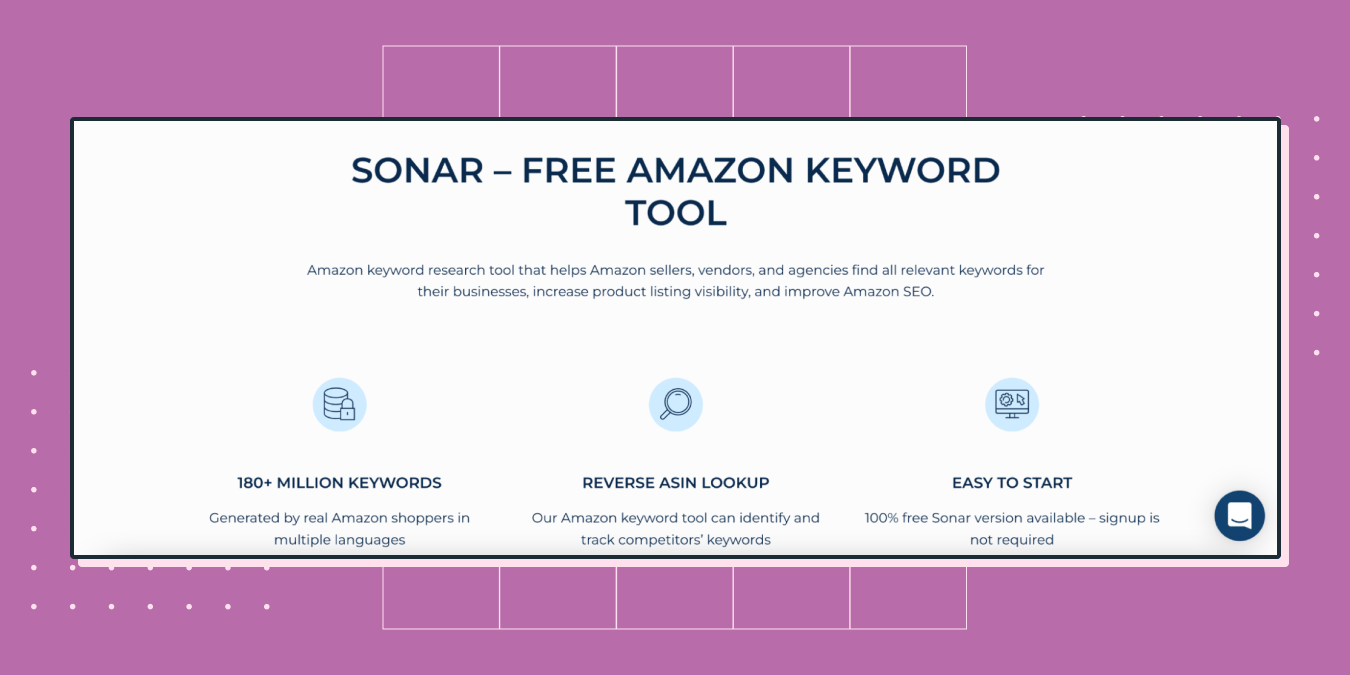
Here’s how you can use it:
- Go to the Sonar website and sign up for an account.
- Once you’re logged in, click on the “Keyword Research” tab in the top menu.
- Enter the main keyword or product category you want to target in the search bar, and click “Search”.
- Sonar will generate a list of related keywords, along with data on their search volume, competition level, and cost-per-click (CPC) in Google AdWords.
AMZ Tracker: AMZ Tracker is a paid Amazon keyword research tool that provides detailed data on the search volume and competition of keywords on the platform. It also offers keyword tracking and alerts, allowing you to see how your keywords are performing over time and identify any changes in rankings.
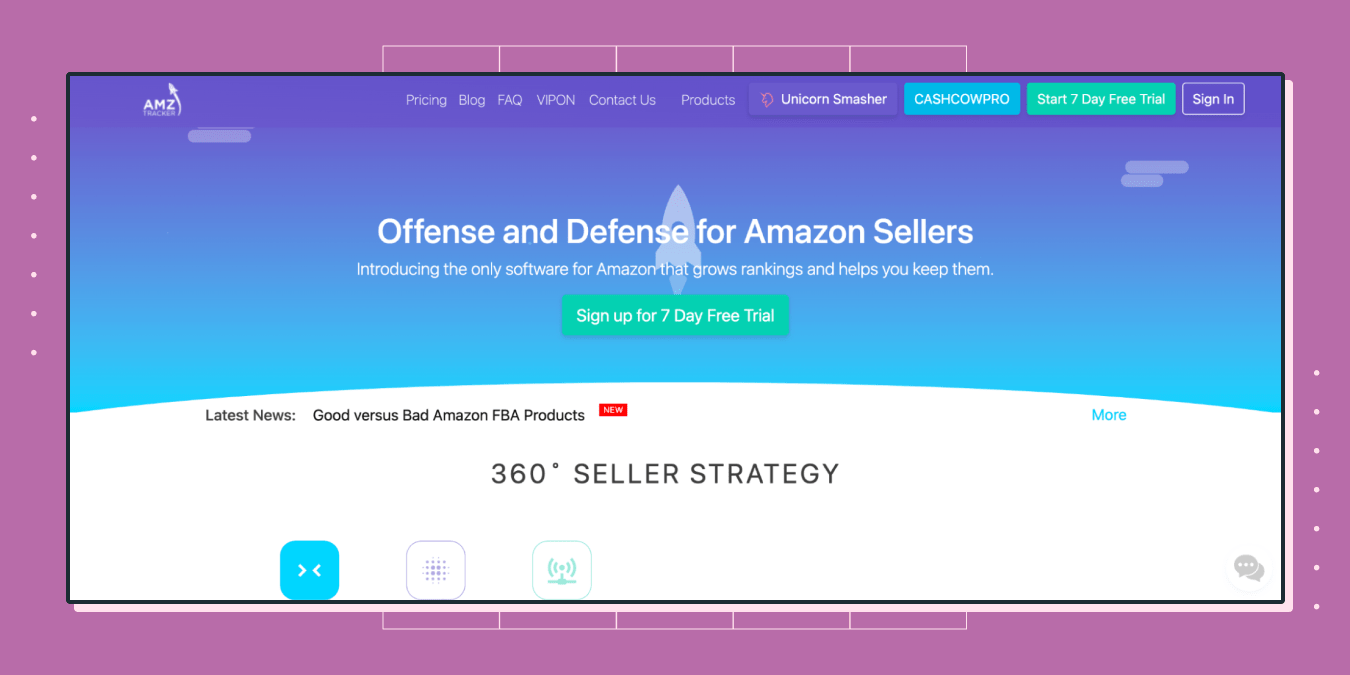
Here’s how you can use it:
- Go to the AMZ Tracker website and sign up for an account.
- Once you’re logged in, click on the “Keyword Tracker” tab in the top menu.
- Enter the main keyword or product category you want to target in the search bar, and click “Search”.
- AMZ Tracker will generate a list of related keywords, along with data on their search volume and competition level.
Merchant Words: Merchant Words is a paid keyword research tool that provides data on the search volume and competition of keywords on Amazon. It also offers a list of related keywords and phrases, as well as data on the performance of individual products.
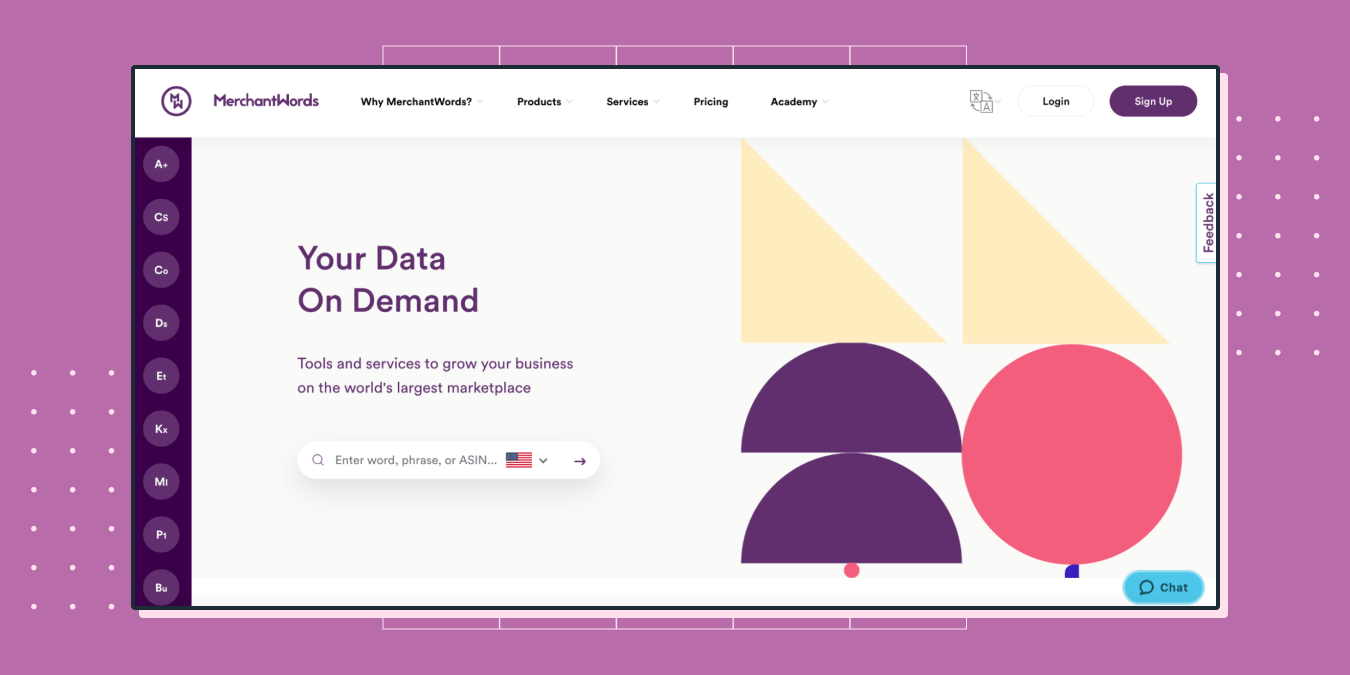
Here’s how you can use it:
- Go to the Merchant Words website and sign up for an account.
- Once you’re logged in, enter the main keyword or product category you want to target in the search bar, and click “Search”.
- Merchant Words will generate a list of related keywords, along with data on their search volume and competition level.
Jungle Scout: Jungle Scout is a paid keyword research tool that offers data on the search volume and competition of keywords on Amazon, as well as related keywords and phrases. It also provides data on the performance of individual products, allowing you to see how well they are ranking for specific keywords.
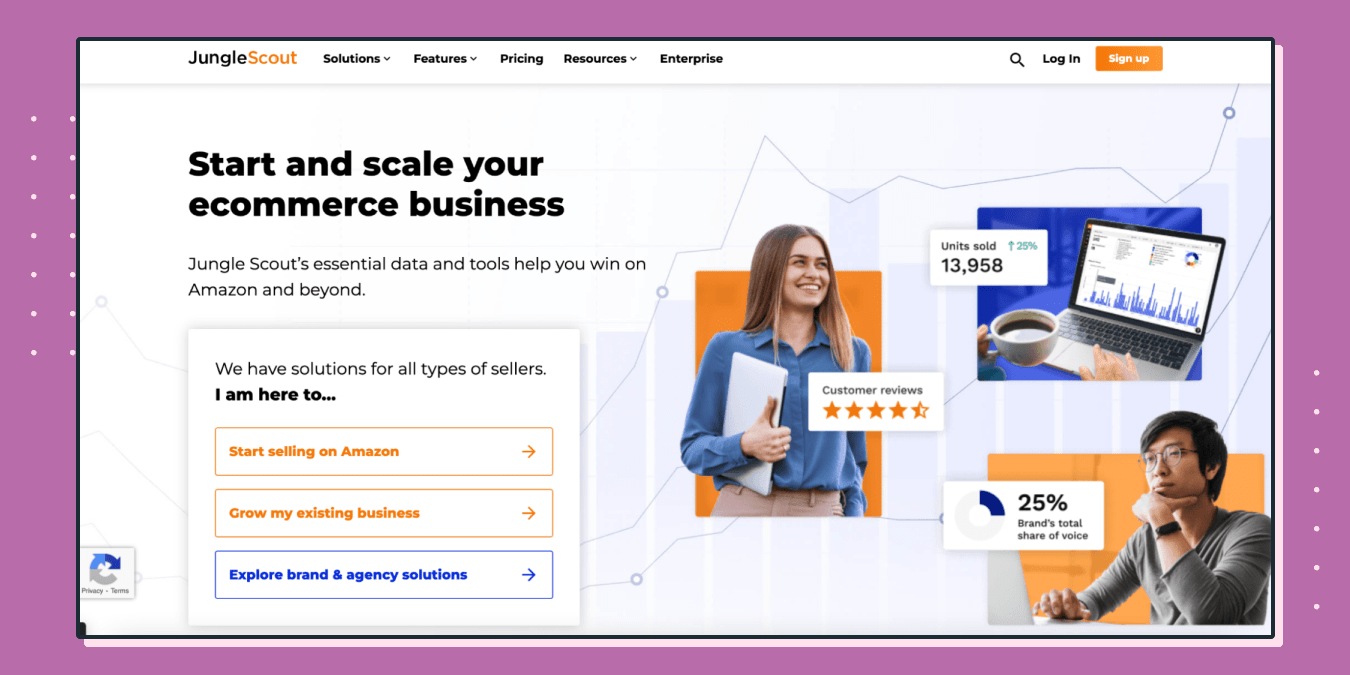
Here’s how you can use it:
- Go to the Jungle Scout website and sign up for an account.
- Once you’re logged in, click on the “Keyword Scout” tab in the top menu.
- Enter the main keyword or product category you want to target in the search bar, and click “Search”.
- Jungle Scout will generate a list of related keywords, along with data on their search volume and competition level.
Google Keyword Planner: Google Keyword Planner is a free keyword research tool that allows you to search for keywords and see how they are performing in terms of search volume and competition. Although It’s not specifically designed for it, you can still turn it into an Amazon keyword planner. You can use it for finding keywords and getting a sense of the competition for particular terms.
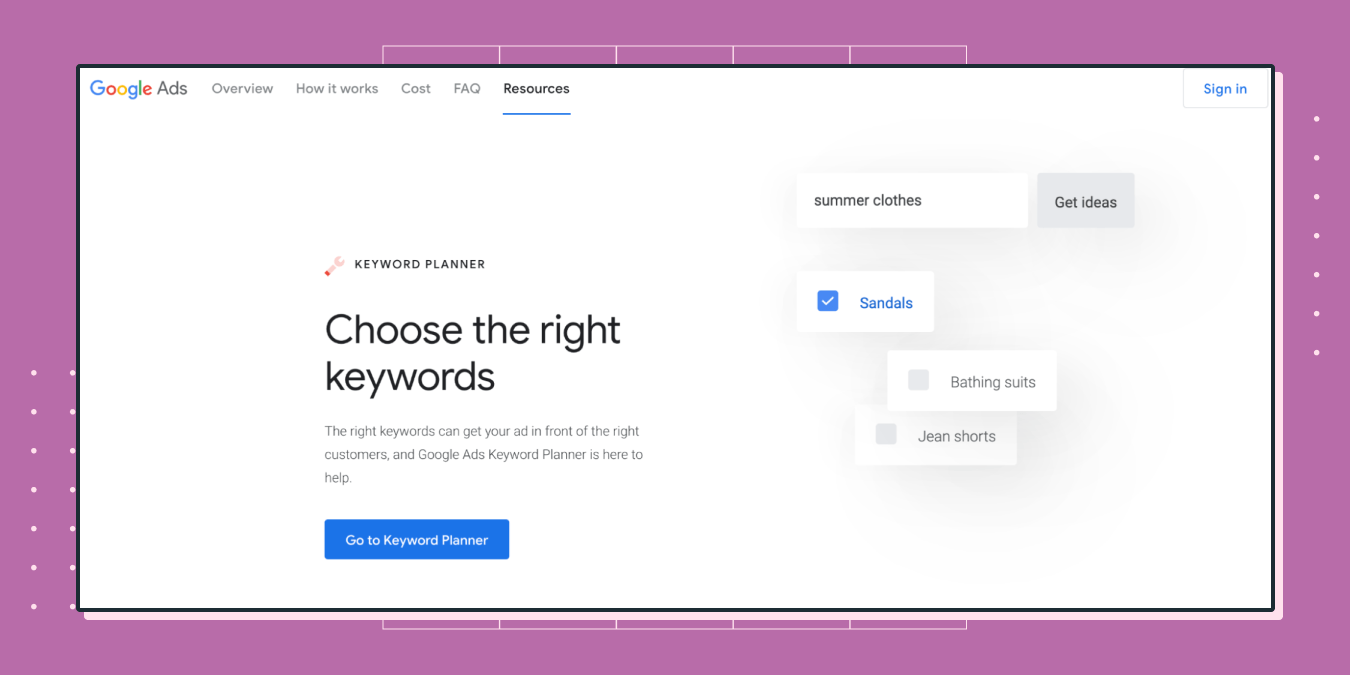
To access the Google Keyword Planner,
- You will need to have a Google Ads account.
- Once you have an account, you can access the Keyword Planner by going to the “Tools” menu in your Google Ads account and selecting “Keyword Planner” from the dropdown list.
Note that you will need to be signed in to your Google Ads account to access the Keyword Planner. If you do not have a Google Ads account, you can sign up for one at
Ubersuggest: Ubersuggest is a free keyword research tool that allows you to search for keywords and see how they are performing in terms of search volume and competition. It also provides data on related keywords and phrases, as well as suggestions for negative keywords to exclude from your campaigns.
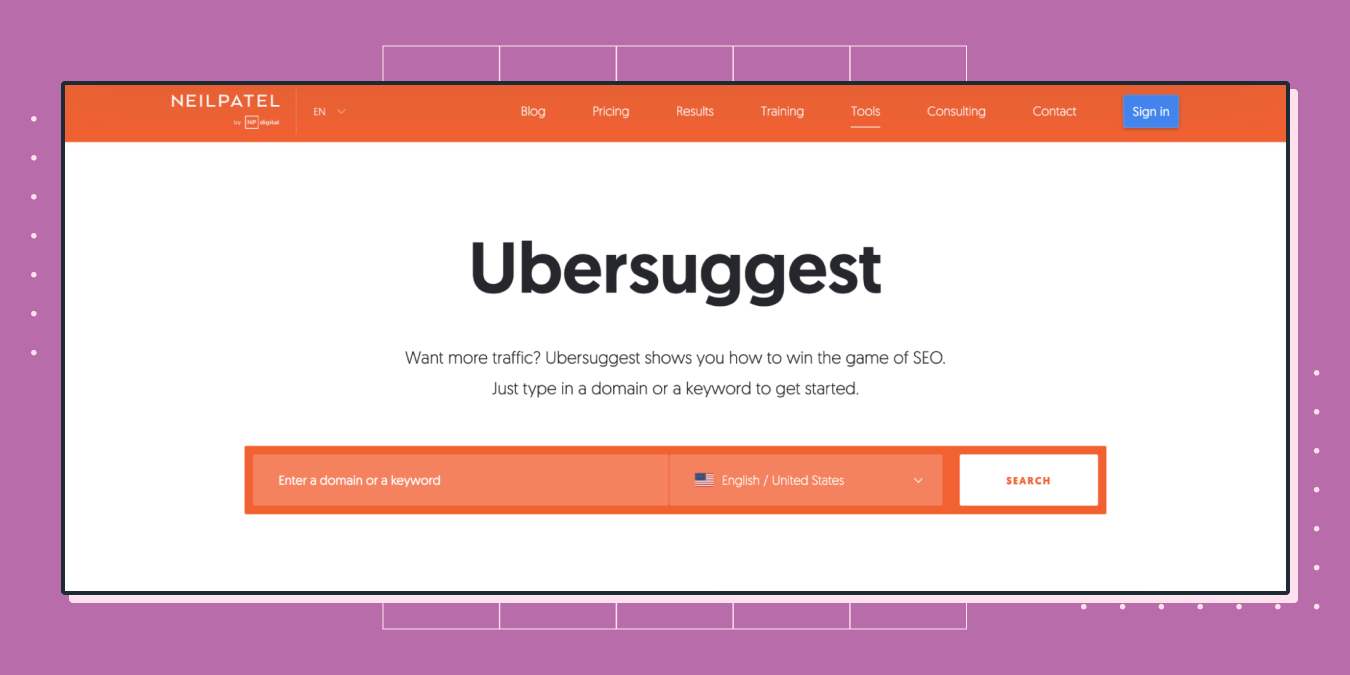
Here’s how you can use it:
- Go to the Ubersuggest website and enter the main keyword or product category you want to target in the search bar.
- Click on the “Keyword Ideas” tab in the top menu.
- Ubersuggest will generate a list of related keywords, along with data on their search volume, competition level, and cost-per-click (CPC) in Google AdWords.
SEMrush: SEMrush is a paid keyword research tool that offers data on the search volume and competition of keywords on Amazon, as well as related keywords and phrases. It also provides data on the performance of individual products, allowing you to see how well they are ranking for specific keywords. In addition to keyword research, SEMrush also offers a range of other features, including SEO, PPC, and content marketing tools.
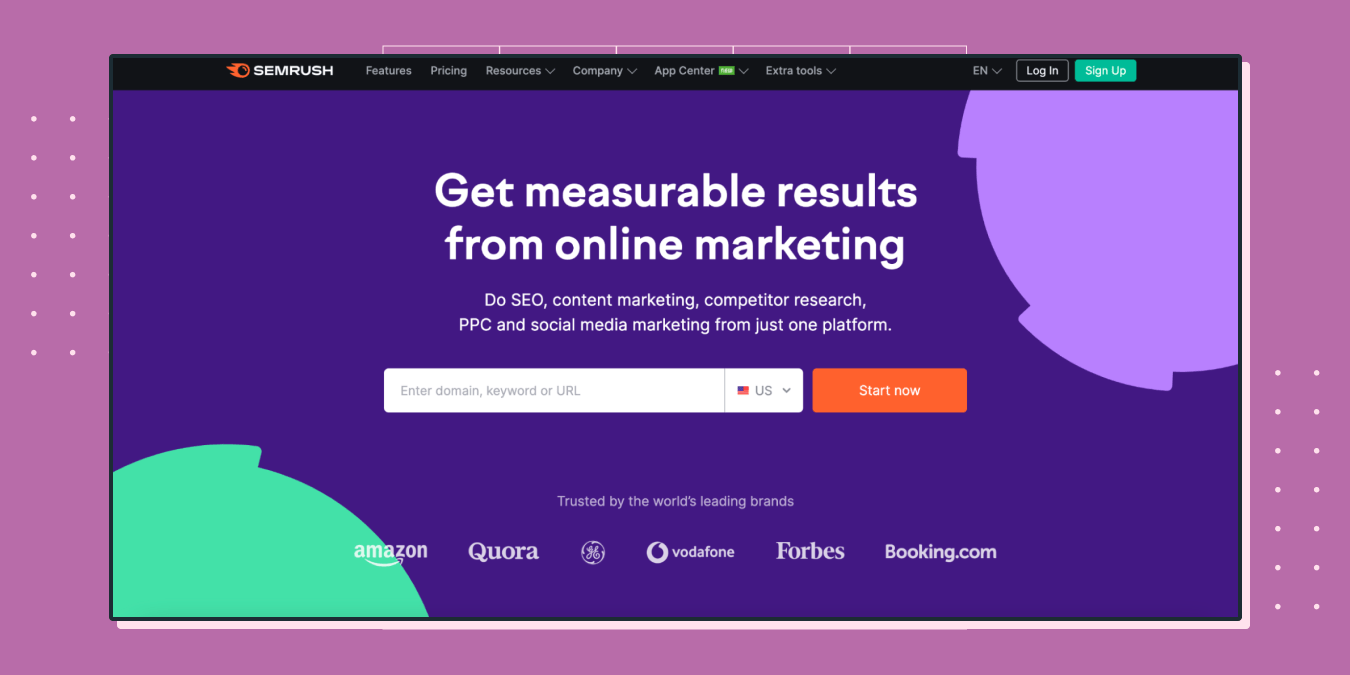
Here’s how you can use it:
- Go to the SEMrush website and sign up for an account.
- Once you’re logged in, click on the “Keyword Research” tab in the right-side menu.
- Enter the main keyword or product category you want to target in the search bar, and click “Search”.
- SEMrush as an Amazon keyword finder will generate a list of related keywords, along with data on their search volume, competition level, and cost-per-click (CPC) in Google AdWords.
Ahrefs: Ahrefs is a paid but one of the best Amazon keyword research tools that offers data on the search volume and competition of keywords. It also functions as an Amazon keyword generator and suggests related keywords and phrases. Additionally, it provides data on the performance of individual products, allowing you to see how well they are ranking for specific keywords. In addition to keyword research, Ahrefs also offers a range of other features, including SEO, backlink analysis, and content marketing tools.

Here’s how you can use it:
- Go to the Ahrefs website and sign up for an account.
- Once you’re logged in, click on the “Keywords Explorer” tab in the top menu.
- Enter the main keyword or product category you want to target in the search bar, and click “Search”.
- Ahrefs will generate a list of related keywords, along with data on their search volume, competition level, and cost-per-click (CPC) in Google AdWords.
Keywordtool.io: Keywordtool.io is a free Amazon keyword research tool that allows you to search for keywords and see how they are performing in terms of search volume and competition. This Amazon keyword generator provides data on related keywords and phrases, as well as suggestions for negative keywords to exclude from your campaigns.
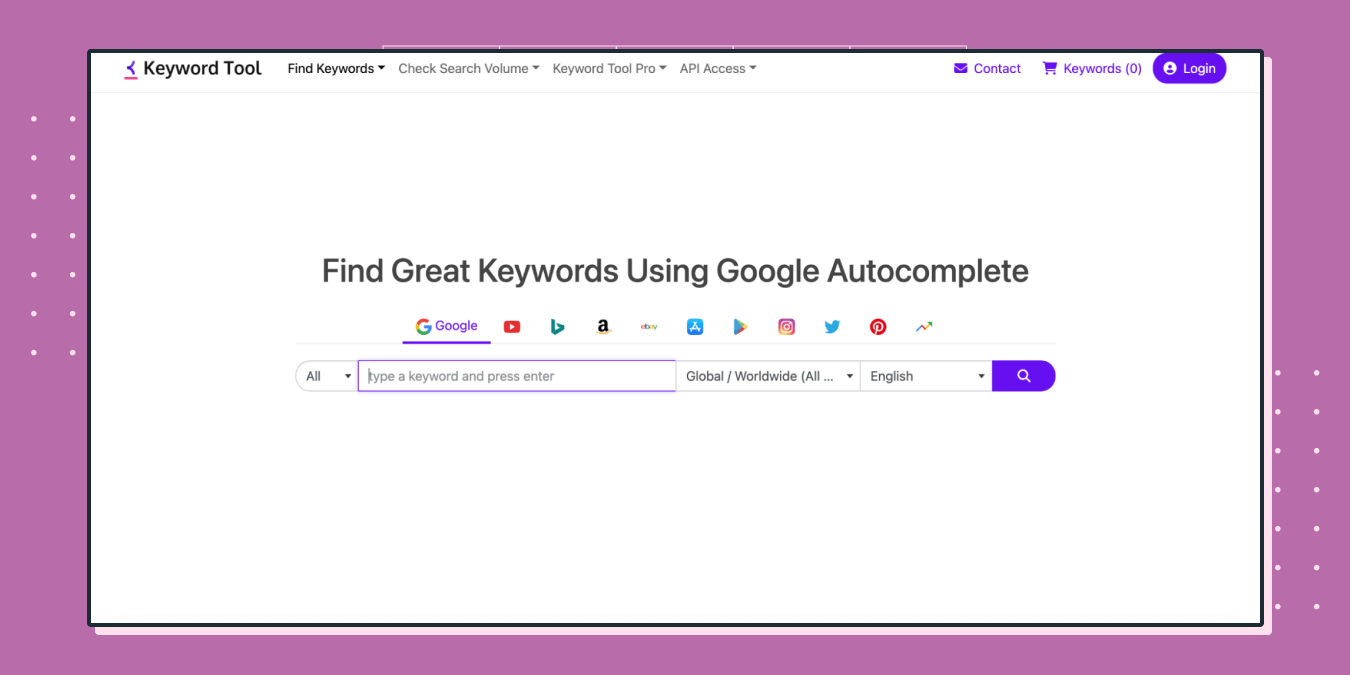
Here’s how you can use it:
- Go to the Keywordtool.io website and sign up for an account.\
- Once you’re logged in, enter the main keyword or product category you want to target in the search bar, and click “Search”.
- Keywordtool.io will generate a list of related keywords, along with data on their search volume and competition level.
It’s worth noting that some of the Amazon keyword research tools, like AMZ Tracker, Merchant Words, Keyword Inspector, SemRush, Ahrefs and Jungle Scout, are paid tools, while others, like Sonar, Google Keyword Planner, Ubersuggest, and Keywordtool.io, are free. You may want to try out a combination of both paid and free tools to find the right fit for your business needs and budget.
Amazon keyword research tips
To get the most out of your Amazon keyword research efforts, here are a few tips to keep in mind:
Start with a list of relevant keywords: Before you begin your keyword research, make a list of relevant keywords and phrases that you think customers might use to search for your products. This will give you a starting point and help you narrow down your search. You can generate this list by brainstorming ideas, analyzing customer reviews, and using Amazon’s autocomplete feature.
For sellers who want to maximize their visibility not only on Amazon but also across search engines, partnering with an experienced Chicago SEO Firm can be a game-changer. SEO companies like Seotwix can provide deep insights into keyword opportunities, help optimize product listings, and implement strategies that drive long-term traffic from both organic search and Amazon’s internal algorithm.
Use long-tail keywords: Long-tail keywords are more specific and less competitive than short-tail keywords. By targeting long-tail keywords, you can improve your chances of ranking higher in search results and attracting more qualified traffic to your listings. For example, instead of targeting the short-tail keyword “dog toys,” you might consider targeting the long-tail keyword “indestructible dog toys for heavy chewers.”
Analyze the competition: When evaluating keywords, it’s important to consider the level of competition. Keywords with high competition may be more difficult to rank for, so you may want to consider targeting keywords with lower competition instead. You can use keyword research tools or analyze your competitors’ listings to get a sense of the competition for a particular keyword.
Use keyword research tools: Amazon is the biggest eCommerce platform with over 300 million active buyers, you should use the Amazon keyword planners to help you find the top search terms and then use it for your product listings. These tools can provide data on search volume, competition, and related keywords, making it easier for you to identify the best keywords to target. Some popular keyword research tools for Amazon include Sonar, AMZ Tracker, Merchant Words, Keyword Inspector, and Jungle Scout.
Test and track your keywords: Once you’ve identified a list of target keywords, it’s a good idea to test and track your keywords to see how they are performing. You can do this by using keyword tracking and alert tools, analyzing your search rankings, and monitoring your traffic and sales data. By testing and tracking your keywords, you can identify which keywords are working well and which ones may need to be optimized or replaced.
By following these tips, you can effectively use keyword research to improve the visibility of your products on Amazon.
Top Amazon Search Terms
In addition to using keyword research tools, it can be helpful to consider the top Amazon search terms that customers are using. Here are some popular search terms that you may want to consider targeting:
Best sellers: Customers often search for “best sellers” on Amazon to find the most popular and highly rated products in a particular category. By optimizing your product titles and descriptions for the term “best sellers,” you may be able to increase your visibility and attract more qualified traffic to your listings. You can find the best sellers in a particular category by using the Amazon search bar to search for the term “best sellers” followed by the category of your product.
Deals: Customers are always on the lookout for deals, so optimizing your product titles and descriptions for terms like “discount,” “sale,” or “cheap” can help you attract more price-sensitive shoppers. If your business model is Amazon retail arbitrage, this will help you get an edge over your competitors if they are selling similar products. You can find deals on Amazon by using the search bar to search for terms like “discount,” “sale,” or “cheap,” or by using a tool like CamelCamelCamel to track price changes on Amazon.
Brand names: Customers often search for specific brand names on Amazon, so if you sell branded products, be sure to include the brand name in your product titles and descriptions. You can find brand names by using the Amazon search bar to search for your own brand or your competitors’ brands, or by using a tool like Jungle Scout to analyze your competitors’ listings. TIP: If you’ve your own personal brand, protect your intellectual property under the Amazon brand registration program and prevent others from selling counterfeits and replicas of your product on the platform.
Product features: Customers often search for specific product features when shopping on Amazon, so be sure to include any relevant features in your product titles and descriptions. For example, if you sell a waterproof phone case, you may want to include “waterproof” in your product titles and descriptions. You can find product features by analyzing customer reviews and your competitors’ listings, or by using a tool like Jungle Scout to analyze product features in bulk.
Customer reviews: Customers often rely on customer reviews when making purchasing decisions on Amazon, so be sure to include keywords related to customer reviews in your product titles and descriptions. For example, you may want to include terms like “highly rated by a customer,” “customer reviews,” or “customer feedback.” You can find customer review keywords by analyzing customer reviews for your own products or your competitors’ products, or by using a tool like Reviewmeta to analyze customer reviews in bulk.
How to find keywords on Amazon?
There are several ways to find keywords on Amazon, including
Using keyword research tools: As mentioned earlier, there are several Amazon keywords research tools available that can help you find the best keywords for your listings. These Amazon SEO tools can provide data on search volume, competition, and related keywords, making it easier for you to identify the best keywords to target.
Analyzing customer reviews: Customer reviews can be a goldmine of keyword ideas. By analyzing customer reviews for your own products or for competing products, you can get a better understanding of the keywords and phrases that customers are using when searching for products on Amazon. To find customer reviews, you can use the Amazon search bar to search for your products or your competitors’ products, or you can use a tool like Reviewmeta to analyze customer reviews in bulk.
Using Amazon’s autocomplete feature: When you start typing a search query into Amazon’s search bar, the platform will suggest related search terms and phrases. These suggestions can be a good source of keyword ideas and can help you understand the types of terms that customers are using to search for products on Amazon. To use this feature, simply start typing a search query into the Amazon search bar and see what suggestions appear.
Analyzing your competitors: You can look at the top Sellers on Amazon and learn from them. By analyzing the keywords and phrases that your competitors are using in their product titles, bullet points, and descriptions, you can get a better understanding of the keywords that are working well in your market. To find your competitors’ keywords, you can use the Amazon search bar to search for your products or your competitors’ products, or you can use a tool like Jungle Scout to analyze your competitors’ listings in bulk.
When finding keywords on Amazon, it’s important to focus on relevant and specific terms that are likely to be used by customers when searching for products. Avoid using overly broad or generic keywords, as these may not be as effective in driving qualified traffic to your listings. It’s also a good idea to mix and match different keyword sources and use various tools and techniques to find the best keywords for your Amazon listings.
Conclusion
Summing up, Amazon keyword research is an essential part of SEO optimization. There are several Amazon SEO tools and strategies available to help you find the best keywords for your listings. By using keyword research tools, targeting top Amazon search terms, and analyzing customer reviews and competitors, you can improve your product visibility and drive more sales on the platform.
If you’re interested in selling on other eCommerce platforms in addition to Amazon, consider using a multichannel selling solution to streamline the process and manage your listings from one central location.
To get started with multichannel selling, consider using a tool like Sellbery, which offers a range of features and integrations to help you manage and grow your eCommerce business. With Sellbery, you can list and sell your products on multiple platforms, manage your inventory, process orders, and track your sales data from one central location. If you’re an established seller on other eCommerce platforms but new to Amazon, you should checkout the best products to sell on Amazon and pick some winners to start your multichannel selling journey.
By using a multichannel selling solution, you can take your eCommerce business to the next level and reach a wider audience, increase your sales, and grow your business.
Was this news helpful?







 Yes, great stuff!
Yes, great stuff! I’m not sure
I’m not sure No, doesn’t relate
No, doesn’t relate



